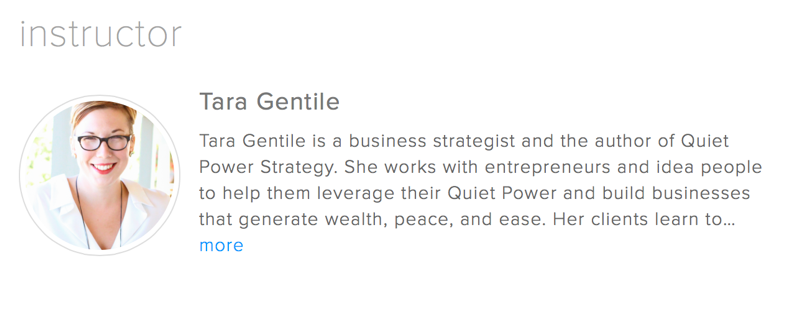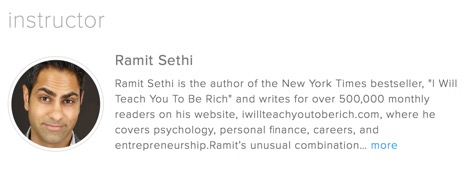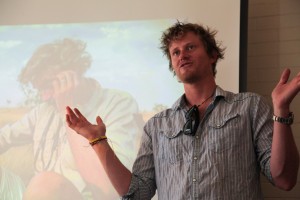As a beginner filmmaker getting your work out there is a challenge. Where and who is your audience, how to maintain relationships, and how & where to distribute your work are all important aspects toward making your work known.
1. Marketing & Understanding Your Audience
If you have ever read about marketing, this aspect is plastered across the internet and is seen in advice columns for freelancers of all walks; because it’s true! But let’s break it down a little further and examine what exactly this means for the outdoor adventure filmmaker wanting to make this more than just a hobby. Figuring out exactly who your audience is can be a fluid concept that is often very difficult to fully grasp. Breaking it down into small, basic steps is a good place to start.
Who’s Already Doing it Successfully?
Find the big names in the industry. Even if all you have to go off of is one name, start there and see who they are following on social media, who they are friends with on Facebook, etc. Look up who they have worked for and who else is/was involved in the same projects and where they are now. I realize if this was read out of context it would sound more like How to Be a Stalker 101, but in a sense that’s what you’re doing: trying to find out as much as you can about the people who are in the industry. I found that once I started digging, it all became this giant intertwined web of connections: so be prepared to go down the rabbit hole!
*My personal tip for you: The one name that changed my life starts with a Ben and ends with a Sturgulewski. So if you didn’t have a name before, now you do. Go do your homework! Ben Sturgulewski Bio
Become Part of the Audience
After doing your homework on the names that are successfully doing what you want to be doing, take a step back and realize that you are now part of their audience and understand how valuable this can be. Be aware of how you follow them, what you like about their content and how you benefit from their work. Understanding this within yourself can give you tremendous amounts of insight into what aspects you like and want to simulate (steal like an artist, as seen below) or which aspects you aren’t crazy about, shaping what you would change or maintain in your own work.
Learn more about how to steal like an artist with Austin Kleon, author of Steal Like and Artist, Show Your Work, and Newspaper Blackout
“Your goal is to find out where your audience congregates online… Then join the conversation.” –Ramit Sethi
This being said, it is also important to examine the rest of the audience as well and try to dig a little deeper to understand if they feel the same way as you. What is this audience responding to? Or just as important, what aren’t they responding to? What’s the age group? How are these people finding out about outdoor adventure filmmakers? Maybe they’re just like you, or maybe they are sourcing from a different avenue? Stalking people who are successful at what they do is just as important as stalking the people who make them successful: their audience.
It is easy to become biased in our opinions and find ourselves searching for answers that support a demand for our product. Try and be as honest with yourself as you can during this stage of the process; forcing things to justify your means will only hurt you in the long run, so strive to be as objective as possible.
*A great exercise is to create a mind map of this audience and how they found interest in this type of work. Locate the points on that map where you can interact with them and make your presence known at these points in order to make them your audience.
2. Promoting Through Relationships
Once you have a better idea about who your audience and fellow influencers are, go make your presence known and be active in both social media and the filmmaking community. The people in the industry might be your best audience after all.
Build Community Presence and Networks
Become a part of your filmmaking community by volunteering your time and by attending events such a film festivals and workshops; in any way you can, put yourself out there, network and form relationships. Persistence can be key here: even if your people don’t recognize you at first, if you keep showing up and keep making your presence known, they will eventually notice you. They say it takes someone three times of forgetting something to truly remember it.
(Visit the Top 4 Festivals article on how to make the most from your film festival experience)
Practice pitching your ideas with those around you: this will not only help generate feedback and support from peers and public, but will also help give you better clarity for yourself and your mission. Sharing your ideas through face to face networks will expand your audience and increase your marketing, promotional and distributing avenues. (Watch for our upcoming tutorial for how to create a pitch!)
Build and Maintain Your Social Media Relations
While you are also expanding your networking don’t forget to invest and appreciate the support you currently have by constantly posting and sharing ideas. It’s important to keep the audience you do have engaged.
Show your work! If your anything like me, it seems unnatural to put unpolished work out there, but people love seeing the progress you make, and it will keep people interested and invested in the journey to your finished product. It also helps generate new content on your feed: instead of simply having one post featuring the finished product, have more frequent posts showing the steps you took to get there.
It might be a good idea to create a portfolio of your work (here is where you show less of your rough work and more of a finished product). Even if it’s only a few pieces, having a place to display your work in a professional setting can be helpful in marketing and promoting yourself.
Develop Your Product Accordingly
Having a product that consumers want is one of the most important element to successfully marketing, promoting and then distributing your work. If you are not in touch with this demand, it will be an uphill battle trying to convince people that they want what you have to offer. This is where doing your homework and understanding who your audience is and what it is they want will be extremely helpful in shaping your work. As a creative, putting yourself out there is like sharing a piece of your soul and can be an extremely vulnerable and intimidating step to take! So set yourself up for success, do your homework and put your work out into the world feeling confident that you are meeting some sort of demand and creating something with unique value.
Utilize Your Strengths
 Remember, everyone has something worth sharing: understanding what your strengths are and working with these assets are important. If you’re not sure what your strengths are as an outdoor filmmaker, try sitting down and brainstorming a list of things you’re good at, what you feel qualified to teach others or what people come to you for. Even if you’re just getting started and your strengths don’t directly correlate with the film industry, try and see if there is a way to translate your strengths into your film related work.
Remember, everyone has something worth sharing: understanding what your strengths are and working with these assets are important. If you’re not sure what your strengths are as an outdoor filmmaker, try sitting down and brainstorming a list of things you’re good at, what you feel qualified to teach others or what people come to you for. Even if you’re just getting started and your strengths don’t directly correlate with the film industry, try and see if there is a way to translate your strengths into your film related work.
4 tips to developing work that will engage your audience:
- Make it relatable:
Know who your audience is and make your work into something that really addresses their interests, concerns, fears, dreams, wants, hopes, etc.
- Have a message:
Make your work valuable and make sure it has a purpose, even if that purpose is to makes someone laugh or is a short inspiration clip. Be sure your work has intent.
- Create an experience:
Many people get caught up in the idea that you need a purely functional product in order to be successful, but often people will invest their money and time into an experience. Film can be a perfect example of this; take your audience along for a journey.
- Whatever you do, do it well:
Put time and effort into whatever you do. This can be difficult especially when you are just starting out and filmmaking is most likely done in your spare time, but if you’re serious about it, make time and put in the effort so you can take pride in the work you put out there. Let your passion shine through your work!
3. Distributing
So, you now have an understanding of who your audience is and have a product you feel confident about putting out there. Now the question is: how do you share it? As a beginner, you’re just starting to make a name for yourself: my best suggestion is to start by giving it away. There are instances that advise against this, and I do agree it is circumstantial, but in the outdoor adventure film niche, you will see even some of the top producers sharing their work on public spaces. The idea is that others will see your work and share it, in doing so you increase your fan base, build your marketing presence and ultimately get people interested and invested in your work.
That being said, when you do begin to get paid for your work, my advice is don’t undersell yourself. Aim for an audience that is serious about your work and will be willing to invest a little more for a (your!) quality product. But that is to be elaborated on at another time (Follow up article anyone…?) For now, as a beginner, the most important steps are doing your homework, being aware of your audience, building and maintaining relationships, contributing work that is valuable, unique, quality and in demand and maintaining a steady presence.
Interested about learning more? Check-out these classes.Some of them require an investment, but building up the business aspect of your film career is one of the most important parts of becoming a freelancer, so, in my opinion, it pays for itself in the long run.

Market Launch & Sell Your Next Big Thing


